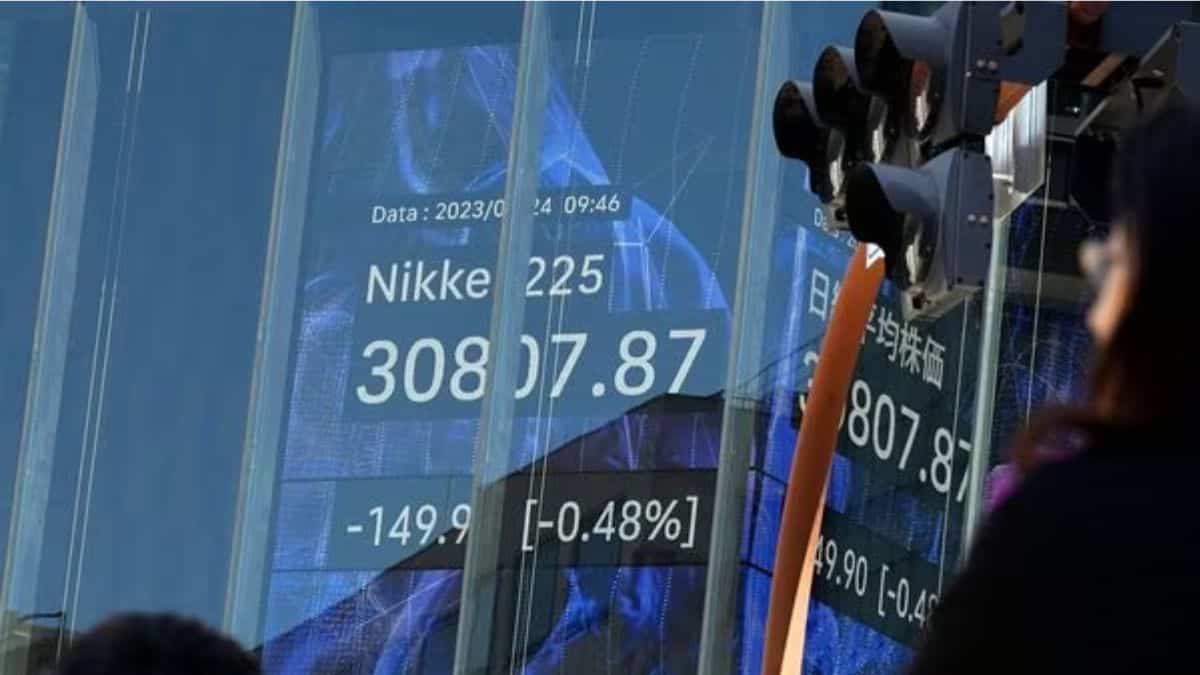 Image credits - Mint.com
Image credits - Mint.com
Japan’s benchmark Nikkei stock average smashed through the 35,000 barrier for the first time since February 1990 in a spectacular rally on Thursday. The surge was fueled by a combination of a weaker yen boosting exporters and fading anxieties about an imminent interest rate hike by the Bank of Japan.
The Nikkei surged 1.94%, closing at a dizzying 35,110.52 by the mid-day break. This marked the third consecutive day of gains and put the index on track for its biggest weekly climb since late March 2020, when markets rebounded from the initial shock of the Covid-19 pandemic. The bullish sentiment seemed unstoppable, with analysts predicting a possible retest of the all-time high of 38,915 set in 1989, a level that seemed like a distant mirage for decades.
Several factors contributed to the Nikkei’s remarkable ascent. The yen’s recent depreciation against the dollar proved to be a boon for Japanese exporters, making their goods more competitive in overseas markets. This translated into increased profits and optimism for companies like Toyota, Sony, and Nintendo, driving their share prices higher and propelling the broader market.
Adding to the positive sentiment was the diminishing fear of an interest rate hike by the Bank of Japan. Despite rising inflation concerns, the central bank has remained dovish, reiterating its commitment to ultra-loose monetary policy to support the fragile economic recovery. This stance, while criticized by some economists, has been welcomed by investors who benefit from cheap borrowing and a buoyant stock market.
Another factor bolstering the Nikkei was the relative calmness on the global front. Concerns about a potential recession in the United States and geopolitical tensions have eased lately, allowing investors to take on more risk and seek higher returns in Japan’s resurgent market.
However, some analysts cautioned against excessive exuberance. The Nikkei’s rapid ascent raises concerns about a potential bubble forming, fueled by speculation and loose monetary policy. They warned that a sudden reversal in the yen’s trajectory or a change in the Bank of Japan’s stance could trigger a sharp correction.
Despite the warning signs, the current mood in Japan’s financial district is undeniably buoyant. The 32-year high of the Nikkei symbolizes a remarkable comeback for a market that struggled for decades following the asset price bubble burst of the early 1990s. Whether this resurgence is a temporary blip or marks a sustained revival of Japan’s economic fortunes remains to be seen. But for now, investors are basking in the glow of a resurgent Nikkei, and the iconic index’s return to its stratospheric heights has rekindled hopes for a brighter economic future for Japan.
The Nikkei’s historic jump not only represents a significant financial milestone but also carries broader implications for Japan’s economy and society. A sustained market rally could inject confidence into businesses and consumers, leading to increased investment and spending. This could finally break the cycle of deflation and stagnant growth that has plagued Japan for years.
On the social front, a thriving stock market could boost household wealth and improve public sentiment. The sense of optimism and renewed national pride could have a positive ripple effect throughout Japanese society.
However, the challenges remain daunting. The ageing population, low birth rate, and dependence on loose monetary policy are long-term structural issues that require more than just a bullish stock market to overcome. The government must implement meaningful reforms to address these challenges and ensure that the current economic upswing translates into tangible improvements in the lives of ordinary Japanese citizens.
